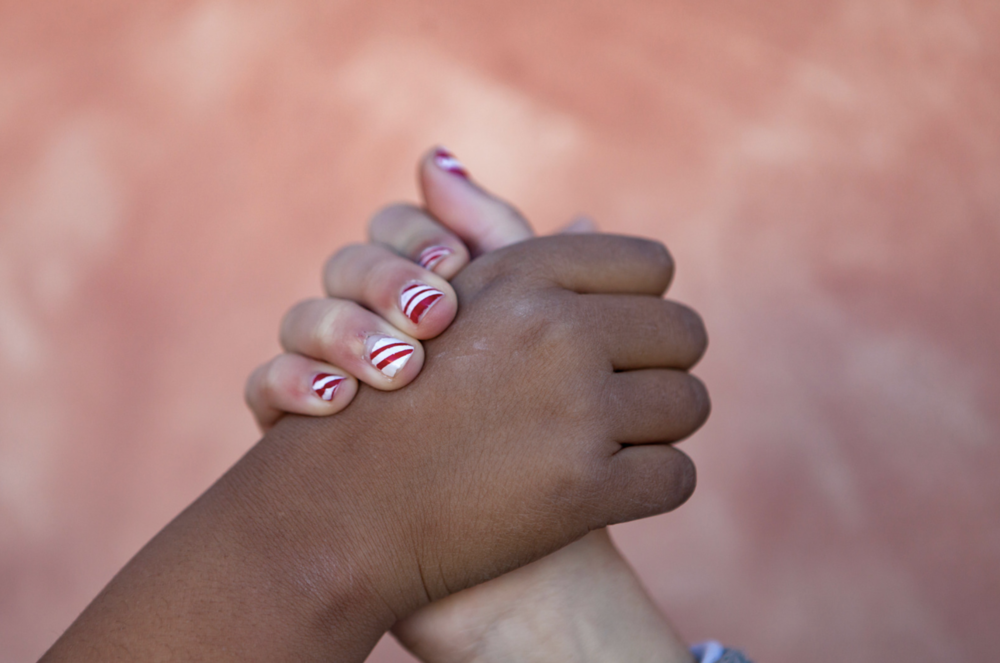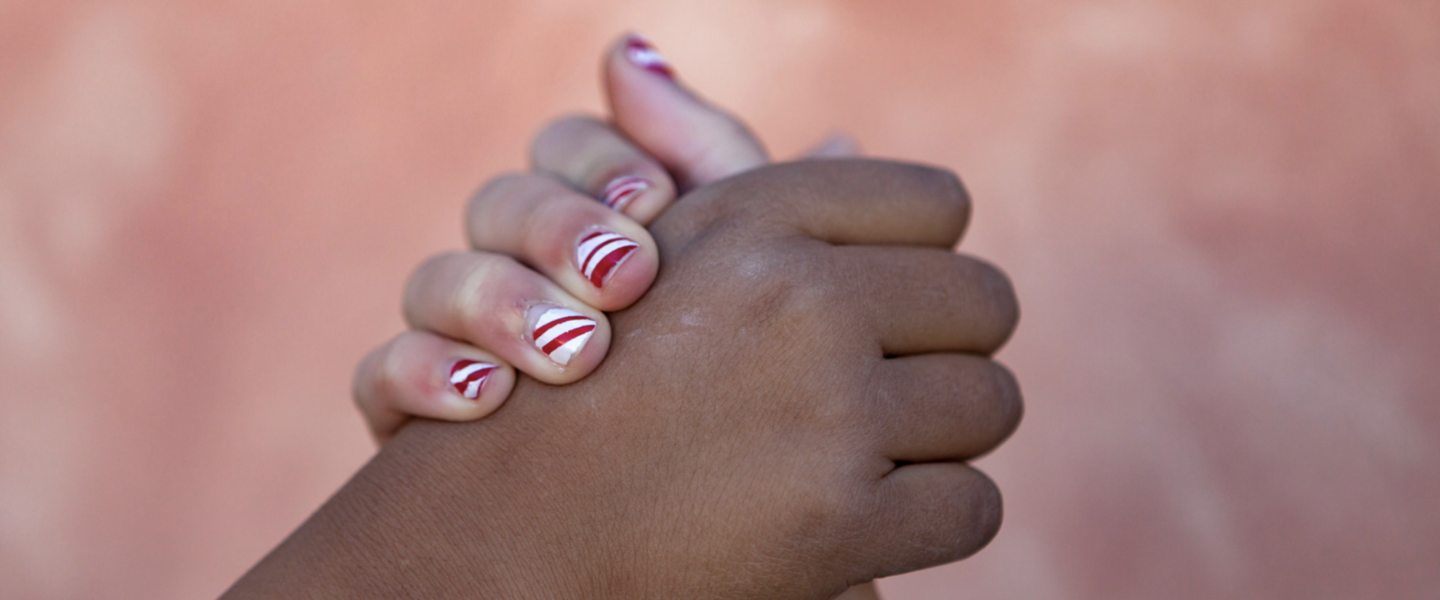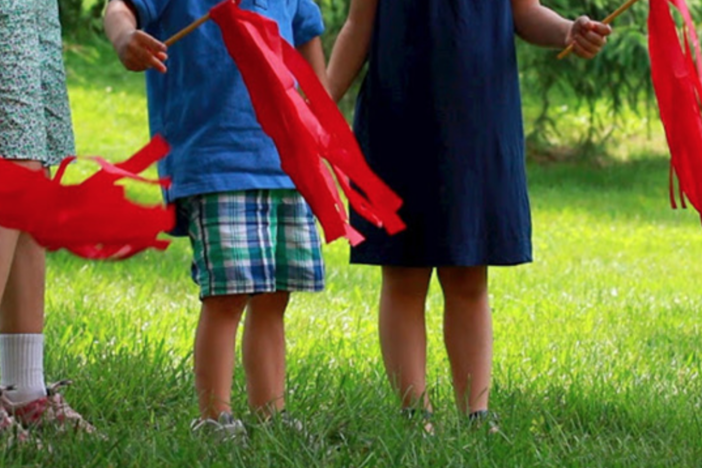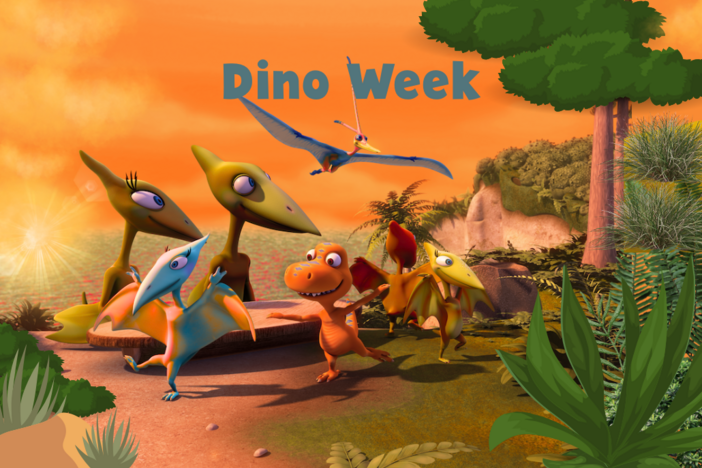
Section Branding
Header Content
Classroom Resources For Addressing Race And Racism
Primary Content

It's important for adults to engage children in conversations about race, the history and perpetuation of racism in our society, and efforts to make our world more equal and equitable. To help educators and parents do this, we've gathered a list of topics with some of our favorite resources from PBS KIDS and PBS LearningMedia.
Resources for Adults Working with Young Children
13 Children's Books About Race and Diversity
Grades: PreK-5
Children's books are one of the most effective tools to engage with young children on important issues. To encourage conversations about race and diversity with your children, check out this list of books to read together as a family.
How to Teach Children About Cultural Awareness and Diversity
Grades: PreK-3
By helping your child understand and respect similarities and differences you will also help your child to understand who he is in the context of your race, ethnic group, culture, religion, language and familial history. In so doing, you will provide your child with personally meaningful information and also introduce concepts from anthropology, history, religion, geography, etc.
Use these tips to spark your children’s curiosity about who they (and others) are in their world.
Learning to Appreciate Diversity Through Play
Grades: PreK-1
Children will explore similarities and differences between themselves and others.
Talking to Kids: Families Come In All Shapes and Sizes
Grades: PreK-3
It’s normal for young kids to be curious about families. Usually, they don’t need much explanation — rather, just the positive acknowledgment that families come in all different shapes and sizes.
Grades: PreK-3
Families come in all shapes and sizes. Use this activity with a group of children (like an organized playgroup) to celebrate differences.
Bias
Confronting Bias: Ethics in the Classroom
Grades: 9-12
The resources in this collection provide teachers with tools to incorporate ethics education in the classroom, promote understanding of differing viewpoints, and foster civil dialogue about bias.
Ruben Salazar: Man in the Middle | Lesson Plan: Objectivity and Bias in Journalism
Grades: 9-12
Ruben Salazar: Man in the Middle, is an investigative look at the life and mysterious death of pioneering journalist Ruben Salazar. In this lesson, students will examine the principles of journalistic objectivity and advocacy journalism through the life and legacy of Ruben Salazar and investigate the complex factors that contribute to bias in reporting.
Who, Me? Biased?: Understanding Implicit Bias
Grades: 6-12
In this interactive lesson, students explore the extent to which society (and they themselves) may discriminate based on factors they’re not even aware of, implicit biases.
The Lowdown | How Good Are You at Detecting Bias? Lesson Plan
Grades: 6-12
Cognitive bias affects us all. Even though we can fact-check information using phones and computers, we still fall for fake news and cling to outdated opinions. Why? When our cognitive biases take control, our ability to make logical judgments is limited, and facts take a back seat to deeply held beliefs.
Confronting Bias and Hate: Lesson Plan | And Then They Came for Us
Grades: 6-12
During World War II, the United States government disseminated anti-Japanese propaganda designed to present persons of Japanese ancestry as comic buffoons, silent servants of Japan's Emperor, vicious villains, or subhuman. This lesson gives students the opportunity to analyze anti-Japanese propaganda posters through the framework of the Pyramid of Hate (Anti-Defamation League, 2008).
Grades: 9-12
This activity sheds light on stereotyping in students' lives...they will be asked to see if they notice anything that might be considered stereotyping in the video, but Native American stereotypes are not emphasized.
Black History and Notable Individuals
Grades 6-12
The history of African Americans in Georgia dates back to the earliest days of slavery in the colony. From the Antebellum era to the end of the Civil War slaves toiled on farms and plantations across Georgia. After freedom from slavery, African Americans waited nearly one hundred years for the promises of the 14th and 15th amendments to be kept. Along their journey, their cultural and economic successes and challenges became a part of their history.
Black America Since MLK: And Still I Rise
Grades: 9-12
Explore educational materials from the series Black America Since MLK: And Still I Rise. Embark with professor Henry Louis Gates, Jr. on a deeply personal journey through the last fifty years of African American history. Travel from the victories of the Civil Rights movement up to today, asking profound questions about the state of black America—and our nation as a whole.
Coded Geographies: The Green Book | Lost L.A.
Grade: 11
The Negro Travelers' Green Book exposes Los Angeles as a place of coded segregation and resistance. Explore the challenges African Americans faced in the Jim Crow era and how they adapted to resist that adversity.
Lorraine Hansberry | A Raisin in the Sun: Jim Crow, Home Ownership, and the American Dream
Grades: 6-12
Learn how Jim Crow laws impacted home ownership and the pursuit of the American Dream in this series of videos from the American Masters film, Lorraine Hansberry: Sighted Eyes/Feeling Heart.
Atlanta's East Lake Meadows: Redlining
Grades: 9-12
During the Great Depression, many lost their homes through foreclosure and couldn’t afford to pay rent, ushering in a national housing crisis. To combat this catastrophe, the Roosevelt administration created programs, including federally-funded public housing through the New Deal. These programs primarily benefited white families, with limited, few offerings in segregated areas for black families.
Stereotyping and the Narrative of the Welfare Queen
Grades: 9-12
In the 1970s, America was introduced to Linda Taylor, a successful scam-artist who would eventually become known as the Welfare Queen. Taylor utilized 33 different aliases, 30 different addresses in various scenarios to defraud government welfare programs. She became a favorite example of welfare abuse at the expense of working Americans in the Ronald Reagan presidential campaign of 1976.
Although Linda Taylor was a real person, the myth of the welfare queen has been largely perpetrated by anti-welfare coalitions for years and caused prejudice against the poor that persists to this day with the media playing a big role in creating this narrative about public housing and welfare.
The Lowdown | What You Need to Know about Gentrification
Grades: 6-12
Gentrification is a term used to describe the economic and cultural transition that often occurs when wealthier residents start to move into predominantly lower-income, urban neighborhoods. The shift typically pumps economic investment into the neighborhood, increasing its desirability and prompting rapid increases in rents and property values. While this boost in resources can result in improved safety and services, among a host of other positive changes, it also invariably alters the character and culture of an established community.
Sojourner Truth | Abolitionist and Women’s Rights Activist
Grades: 3-7
An abolitionist and feminist during the nineteenth century, Sojourner Truth demanded not less discrimination, but no discrimination. Truth escaped enslavement and, despite being unable to read or write, rose to be a leader in the fight for equality and fair treatment for both women and African Americans. Through two primary source activities and a short biographical video, students will understand the remarkable career of this persevering woman who lived up to her self-chosen name.
Grades: 3-7
Jackie Robinson was a sports hero who became a civil rights activist. When Robinson took the field for the Brooklyn Dodgers in 1947, he became the first African American to play Major League Baseball in the modern era. Demonstrating skill as a professional baseball player and consistent dignity both on and off the field, Robinson became an advocate for civil rights, as well as a role model. Through two primary source activities and a short video, understand how Robinson rose to prominence, and explore the importance of courage in his life.
Grades: 5-12
Raised on a cotton field in rural Alabama, Rep. John Lewis served on the frontline of the Civil Rights Movement to end systematic racial segregation. From speaking at the March on Washington to enduring severe beatings as he participated in the Freedom Rides, John Lewis now continues the fight for equality as a U.S. Congressman.
George Washington Carver | Scientist, Inventor, and Teacher
Grades: 3-7
George Washington Carver was a world-renowned American botanist who devoted his life’s work to helping farmers successfully grow their crops. A lover a nature, with a keen intellect and desire to help people better their lives, Carver used his knowledge to make American farms flourish, which helped the nation as a whole. By doing two primary source activities and watching a short video, students will explore the life of science and innovation led by George Washington Carver.
Protests
Grades: 9-12
This lesson uses video from Women, War & Peace: “Pray the Devil Back to Hell,” to help students learn about nonviolent resistance movements that have taken place around the world.
Grades: 5-10
In response to the South's continued practice of segregation, a group of activists from all backgrounds and races rode interstate buses into the deep South. Met by violence and opposition, the Freedom Riders displayed true acts of courage as they peacefully sought to end segregation in the South and achieve civil rights for all people.
Grades: 7-12
Hear from young activists why they peacefully protest with this video and educational materials from PBS NewsHour.
Grades: 9-12
In this lesson, students conduct a Socratic seminar in preparation for creating a plan of action to submit to local bodies of government with suggestions for improving relations between police departments and the people in the communities that they protect and addressing other disparities in our country’s criminal justice system.
Grades: 6-12
Use the following videos to learn about how artists are making a difference in their communities. Whether making murals to inform communities about the importance of a clean planet, or learning how to make your own political art, this collection can be used in your classroom to help your students learn how to use art for change.
Race
Racial Equality: How Far Have We Come and How Far do We Still Need to Go?
Grades: 7-12
Martin Luther King dreamed of an America where people could “not be judged by the color of their skin but by the content of their character.” Use this lesson plan to start a discussion in your classroom about where we are on the path to realizing this dream.
Grades: 9-12
Learn about the relatively recent invention of “race” and judge how well the concept applies to people today in this video from Finding Your Roots. Geneticist David Altshuler describes how people in the 19th Century developed a concept of race that had more to do with the social interactions and hierarchies of that time period than with biological differences. But even while the concept of race was forming, human relationships showed that race was less rigid than it was believed to be.
Grades: 9-12
We all know that people look different. Anyone can tell a Czech from a Chinese. But are these differences racial? What does race mean? Find the answers to these and other questions by exploring different interactivities within this site.
America After Ferguson: America and Race
Grades: 9-12
Following the shooting death of a black teenager by a white police officer in Ferguson, Missouri, a panel discusses the complexities around race in this country, in this video from America After Ferguson.
Grades: 9-12
This lesson uses video excerpts from the PBS series Finding Your Roots with Henry Louis Gates, Jr. to explore the history of racial diversity and intermingling in New Orleans, and how it gave rise to the uniquely American art form of jazz.
Civil Rights
Grades: 3-12
While students today may think of the Civil Rights Movement as part of the distant past, it’s clear that many of the problems that fueled that fight are still with us. This collection of videos, documents, and primary sources lends context to the events and leaders that defined the Civil Rights Movement’s first three decades (1954-1985).
Civil Rights Movement Virtual Learning Journey
Grades: 5-10
Brimming with comprehensive, cross-curricular content, including 14 videos, primary source images and documents, compelling photo galleries, interactive maps, artwork, music, and more, this virtual collection invites students into an engaging exploration of some of the most significant events of the Civil Rights Movement.
Civil Rights and Civil Liberties
Grades: 9-12
These resources from the award-winning PBS series The Supreme Court chart the Court’s unique evolution through archival footage, graphic techniques, and interviews with legal historians and experts. Together, they help unfold complex legal concepts and key Constitutional issues.
The Unfinished Business of the March on Washington and the Civil Rights Movement
Grades: 6-12
The March on Washington is one of the most famous events of the Civil Rights Movement. Almost all of us have seen clips of Martin Luther King, Jr’s famous “I Have a Dream”speech. But the demonstration, formally called the March on Washington for Jobs and Freedom, also had economic goals. This lesson explores those specific goals and asks students to analyze what’s changed since King’s momentous address more than 50 years ago.
The Economic Impact of Racial Discrimination
Grades: 5-10
The Civil Rights Movement was about more than justice and equality for African Americans, it also was about economic opportunity. This story looks at the economic impact of the movement on local Georgians. Felder Daniels owns and works a 101 acre farm near Americus. The farm was passed to him from his sharecropper parents who saved enough money for its purchase. Tena Butler attended segregated schools in Savannah. She knew everything was different for African Americans, but it was accepted as the norm.
The Civil Rights Landscape Today for People of Color
Grades: 9-12
Discover ways in which systemic inequality persists today in the lives of people of color, women, and those living in both urban and rural areas, in this video from Eyes on the Prize: Then and Now.
Current News and Events
Policing the Police: Perspectives on Police Encounters
Grades: 9-12
Can police keep the community safe while still upholding citizens’ constitutional rights? In these videos from FRONTLINE: Policing the Police, journalist Jelani Cobb explores this crucial question with several Newark, New Jersey, police officers. Their conversation reveals the issues that law enforcement and people of color encounter, including police use of weapons during routine questioning, racial bias, police accountability, and the need for police to deal with potentially dangerous situations.
How the Deck Is Stacked: The Recovery's Racial Divide
Grades: 9-12
Find out why, as of 2016, the wealth gap between black and white households in the United States is the largest it has been in three decades, even as the economy is recovering, in this video from FRONTLINE’s “How the Deck Is Stacked,” produced in collaboration with Marketplace and PBS NewsHour.
The Return of School Segregation in Eight Charts
Grades: 6-12
Changing demographics and controversial court rulings have prompted a return to levels of school integration last seen during the Johnson administration, as represented in this series of eight charts from the FRONTLINE: Separate and Unequal website. The charts convey the impacts of the declining role of the courts in enforcing integration plans. Among other findings, the charts show that gains achieved by black students in the South are significantly declining, that segregation tends to rise without court oversight, that segregation is as much about poverty as it is about race, and that attending an integrated school can lead to a healthier financial future.
Exploring Racial Barriers at NASA
Grades: 6-12
Decades after the enrollment of NASA’s first black astronauts, people of color are still a minority in aerospace. Dr. Bernard Harris, Jr., the first African American to perform a spacewalk, discusses challenging stereotypes with a young woman who dreams of planning a mission to Mars. This video is part of the series Moonwalk. The project brings people together for engaging conversations about the Apollo missions and their journeys in space exploration.
Affirmative Action: Should Race Be a Factor in College Admissions?
Grades: 6-12
Affirmative action is back in the news, and with it comes the age-old debate over whether or not universities should consider an applicant’s race when deciding who gets in. When it comes to higher education, affirmative action was originally intended as a way to level the playing field for women and minority students who have historically been discriminated against at these institutions. But now, many opponents say those discrimination days are over and affirmative action is actually itself a form of discrimination.
Death of George Floyd Sets off Massive Protests
Grades: 6-12
On May 25, 2020, George Floyd died while in police custody following arrest. The incident, captured on video, raises questions about the conduct of the specific police officers involved, as well as the department’s broader relationship with citizens of color.
For more resources and ideas on how to engage kids in conversations about race and racism, follow GPB Education on Twitter and Facebook.






